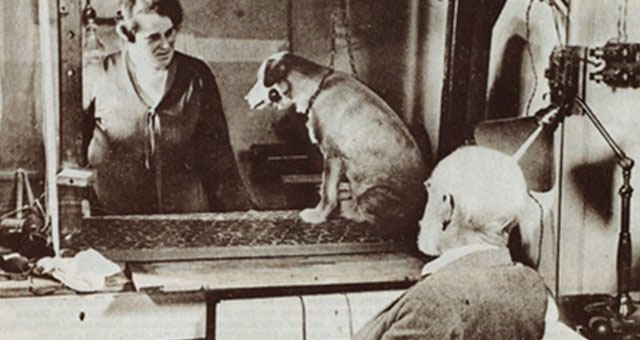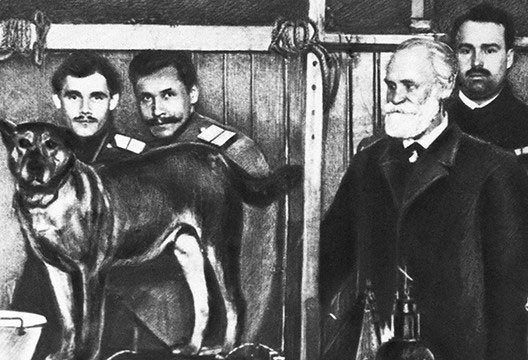Ivan Petrovich Pavlov (1849 – 1936) was a renowned Russian physiologist, psychologist, and physician. He is recognized in world history for receiving the Nobel Prize in 1904.
People often think of psychology as something very complex, related to human social behavior and how these behaviors are implied by the brain. With theories developed over the past two centuries, understanding the psychology behind social behaviors has become much easier. However, there is one study that stands out above all.
This experiment took place in 1890 and was designed by Ivan Pavlov, a famous Russian psychologist of the time, who made groundbreaking advancements in this particular field. Pavlov’s experiment involving his dog helped uncover what we now call classical conditioning or conditioned response.

Pavlov’s experiment helped uncover what is known as the conditioned response.
Conditioned Reflex
Classical conditioning refers to the ability to control or trigger natural behaviors with a new stimulus. Here’s an example to help you understand better.
Imagine a person taking a warm shower from the building’s water supply. Every time someone flushes the toilet in the apartment, the shower becomes very hot, causing the person to jump. Over time, the person begins to understand the pattern and automatically steps back when they hear the sound of the toilet flushing, even if the water temperature from the shower does not change.
The brain likes to create patterns that allow connections to develop, thereby enhancing the reaction time when encountering the same stimulus. In the above example, the brain of the person showering has developed a system where it predicts that something will happen based on a conditioned stimulus (the sound of the toilet flushing) accompanied by an unconditioned stimulus (very hot water).
Pavlov’s Experiment
Pavlov spent a great deal of time studying the digestive system of dogs and why their stomach acid concentration changes based on their diet. In his various experiments observing the biological traits of dogs, he discovered an interesting neural reflex where dogs would salivate when they saw or ate food.
Pavlov wanted to test whether this neural reflex could be trained to be triggered by stimuli other than food. He used his dog for this experiment, where he surgically collected the saliva secreted from the dog’s cheek to observe when saliva was produced and to measure what type of stimulus would elicit more.

Pavlov used his dog for this experiment.
According to Pavlov, the salivation reflex was primarily triggered when the dog’s tongue came into contact with food. After similar experiments were conducted several times, the dog began to learn a pattern and salivated before seeing or eating food. This was because the brain predicted that a similar action would occur in familiar circumstances.
Pavlov modified the experiment by hiding the food behind a screen before the dog received it and also added a conditioned stimulus in the form of a sound emitted by a metronome. As this experiment continued day after day, the dog’s brain formed a connection that led the dog to salivate only upon hearing the ticking sound made by the metronome.
To ensure this experiment was as reliable as possible, Pavlov began using different conditioned stimuli as well as different dogs, all yielding the same accurate results, demonstrating that neural reflexes or social behaviors could be trained to be triggered by stimuli different from the natural repeated stimuli.
This laid the groundwork for Pavlov to conduct further experiments, ultimately establishing the fundamental law of the conditioned reflex phenomenon in animals—a remarkable breakthrough in the history of scientific discovery.
Sadly, the name of the dog that helped Pavlov discover the law of conditioned reflexes was never recorded. Subsequent generations simply referred to it as “Pavlov’s Dog.”
Here is a video reenactment of the experiment (not actual footage).
For many years before the discovery of Pavlov’s experiment, contemporary psychologists viewed the human brain as a simple box that could process neural reflexes and automatic responses to stimuli, without considering that these neural reflexes could be personalized by each individual’s different experiences and the brain’s ability to develop and adapt to new stimuli.
“The brain should be studied through the natural responses of the body it controls.”
After his discovery was published, the world was astonished by this research. In 1904, Pavlov was nominated for the Nobel Prize in Psychology, which he indeed won. Pavlov always wished to teach psychology at prestigious universities outside Russia, but that dream never came to fruition.
Pavlov passed away in 1936, with thousands of people attending his funeral. Today, Pavlov’s work is regarded as foundational to modern psychology.


















































